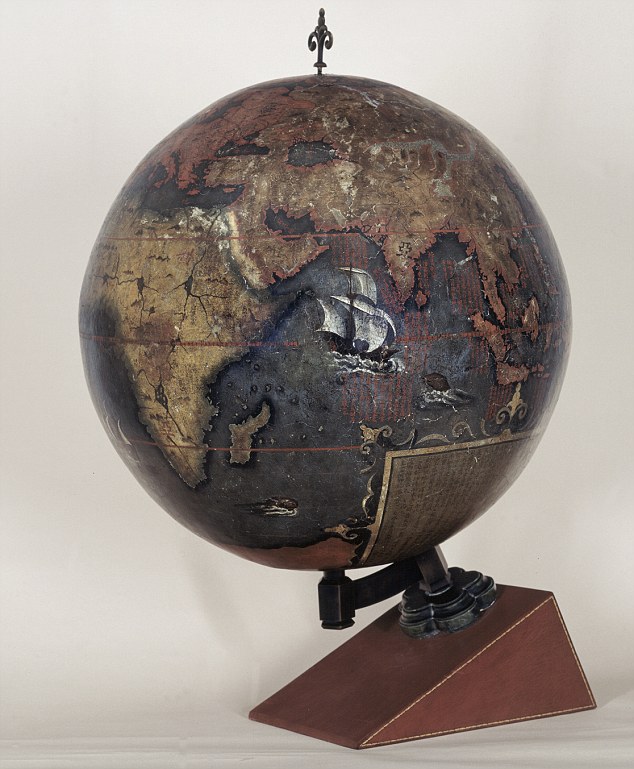Charles Darwin described him as "the greatest scientific traveler who ever lived." He is widely respected as one of the founders of modern geography.
Alexander von Humboldt's travels, experiments, and knowledge transformed western science in the nineteenth century.
 Alexander von Humboldt was born in Berlin, Germany in 1769. His father, who was an army officer, died when he was nine years old so he and his older brother Wilhelm were raised by their cold and distant mother. Tutors provided their early education which was grounded in languages and mathematics.
Alexander von Humboldt was born in Berlin, Germany in 1769. His father, who was an army officer, died when he was nine years old so he and his older brother Wilhelm were raised by their cold and distant mother. Tutors provided their early education which was grounded in languages and mathematics.
Once he was old enough, Alexander began to study at the Freiberg Academy of Mines under the famous geologist A.G. Werner. Von Humboldt met George Forester, Captain James Cook's scientific illustrator from his second voyage, and they hiked around Europe. In 1792, at the age of 22, von Humboldt began a job as a government mines inspector in Franconia, Prussia.
When he was 27, Alexander's mother died, leaving him as substantial income from the estate. The following year, he left government service and began to plan travels with Aime Bonpland, a botanist. The pair went to Madrid and obtained special permission and passports from King Charles II to explore South America.
Once they arrived in South America, Alexander von Humboldt and Bonpland studied the flora, fauna, and topography of the continent. In 1800 von Humboldt mapped over 1700 miles of the Orinco River. This was followed by a trip to the Andes and a climb of Mt. Chimborazo (in modern Ecuador), then believed to be the tallest mountain in the world. They didn't make it to the top due to a wall-like cliff but they did climb to over 18,000 feet in elevation. While on the west coast of South America, von Humboldt measured and discovered the Peruvian Current, which, over the objections of von Humboldt himself, is also known as the Humboldt Current. In 1803 they explored Mexico. Alexander von Humboldt was offered a position in the Mexican cabinet but he refused.
The pair were persuaded to visit Washington, D.C. by an American counselor and they did so. They stayed in Washington for three weeks and von Humboldt had many meetings with Thomas Jefferson and the two became good friends.
Von Humboldt sailed to Paris in 1804 and wrote thirty volumes about his field studies. During his expeditions in the Americas and Europe, he recorded and reported on magnetic declination. He stayed in France for 23 years and met with many other intellectuals on a regular basis.
Von Humboldt's fortunes were ultimately exhausted because of his travels and self-publishing of his reports. In 1827, he returned to Berlin where he obtained a steady income by becoming the King of Prussia's advisor. Von Humboldt was later invited to Russia by the tsar and after exploring the nation and describing discoveries such as permafrost, he recommended that Russia establish weather observatories across the country. The stations were established in 1835 and von Humboldt was able to use the data to develop the principle of continentality, that the interiors of continents have more extreme climates due to a lack of moderating influence from the ocean. He also developed the first isotherm map, containing lines of equal average temperatures.
From 1827 to 1828, Alexander von Humboldt gave public lectures in Berlin. The lectures were so popular that new assembly halls had to be found due to the demand. As von Humboldt got older, he decided to write everything known about the earth. He called his work Kosmos and the first volume was published in 1845, when he was 76 years old. Kosmos was well written and well received. The first volume, a general overview of the universe, sold out in two months and was promptly translated into many languages. Other volumes focused on such topics as human's effort to describe the earth, astronomy, and earth and human interaction. Humboldt died in 1859 and the fifth and final volume was published in 1862, based on his notes for the work.
Once von Humboldt died, "no individual scholar could hope any longer to master the world's knowledge about the earth." (Geoffrey J. Martin, and Preston E. James. All Possible Worlds: A History of Geographical Ideas., page 131).
Von Humboldt was the last true master but one of the first to bring geography to the world.
SOURCE
SOURCE














